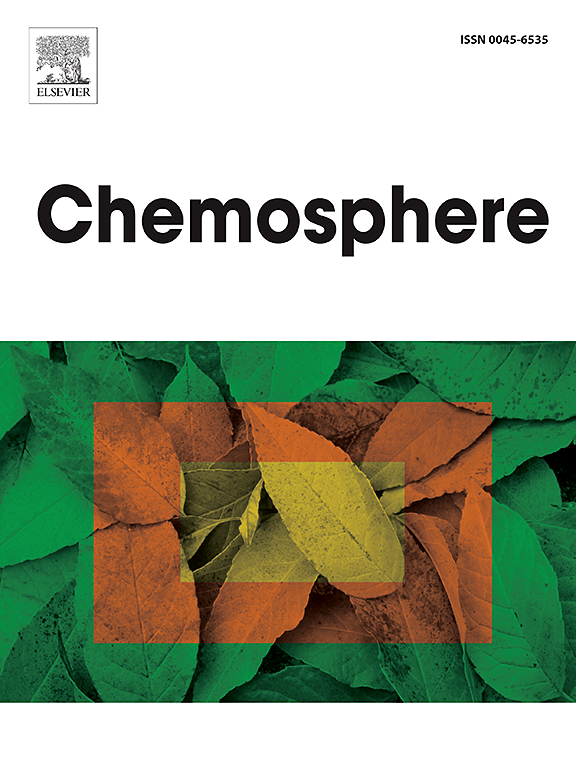Distribution and fate of antibiotics and their main metabolites in sludge stabilization technologies
IF 8.1
2区 环境科学与生态学
Q1 ENVIRONMENTAL SCIENCES
引用次数: 0
Abstract
Sewage sludge tends to accumulate emerging contaminants during wastewater treatment, with many pollutants persisting even after undergoing sludge stabilization treatments, posing potential environmental risks. Antibiotic contamination is of particular concern due to their high persistence and ability to promote the development of resistance genes. However, limited information is available regarding the behavior of antibiotic metabolites. In this study, seventeen antibiotics and metabolites of five therapeutic groups of critically and highly important antibiotics were monitored in wastewater and sludges from fifteen wastewater treatment plants (WWTPs) with five different sludge stabilization treatments: anaerobic digestion, aerobic digestion, dehydration, composting, and lagooning. Results demonstrated that the distribution ratio of metabolites and parent compounds in influent wastewater was correlated with their excretion rates, reflecting pharmaceutical consumption as their primary source to WWTPs. Fluoroquinolone and sulfonamide antibiotics were predominant in influent wastewater, while macrolide antibiotics were more prevalent in primary sludge, likely due to their higher hydrophobicity, which results in greater retention in sludge. Parent compounds dominated over metabolites in sewage sludge, with composting plants showing the highest removal efficiency and highest metabolization among all sludge stabilization technologies studied. Tetracyclines were not detected in any of the sludge samples analyzed and macrolides resulted in the most persistent antibiotics in treated sludges. Results showed low environmental risks associated with the reuse of treated sludge as an organic amendment in agriculture.

抗生素及其主要代谢物在污泥稳定技术中的分布和归宿
在污水处理过程中,污泥容易积累新出现的污染物,许多污染物即使经过污泥稳定化处理后仍然存在,具有潜在的环境风险。抗生素污染由于其高持久性和促进抗性基因发展的能力而受到特别关注。然而,关于抗生素代谢物的行为信息有限。在这项研究中,对来自15个污水处理厂(WWTPs)的废水和污泥中的17种抗生素和5组至关重要的抗生素的代谢物进行了监测,这些废水处理厂采用了5种不同的污泥稳定处理:厌氧消化、好氧消化、脱水、堆肥和泻湖。结果表明,代谢物和母体化合物在进水废水中的分布比例与其排泄率相关,反映了药品消费是污水处理厂的主要来源。氟喹诺酮类和磺胺类抗生素在进水废水中占主导地位,而大环内酯类抗生素在初级污泥中更为普遍,这可能是由于它们具有更高的疏水性,因此在污泥中的滞留率更高。在污水污泥中,母体化合物占代谢物的主导地位,堆肥厂在所有污泥稳定技术中表现出最高的去除效率和最高的代谢。在分析的任何污泥样本中均未检测到四环素类,而大环内酯类是处理过的污泥中最持久的抗生素。结果表明,将处理过的污泥作为有机改良剂在农业中再利用,其环境风险较低。
本文章由计算机程序翻译,如有差异,请以英文原文为准。
求助全文
约1分钟内获得全文
求助全文
来源期刊

Chemosphere
环境科学-环境科学
CiteScore
15.80
自引率
8.00%
发文量
4975
审稿时长
3.4 months
期刊介绍:
Chemosphere, being an international multidisciplinary journal, is dedicated to publishing original communications and review articles on chemicals in the environment. The scope covers a wide range of topics, including the identification, quantification, behavior, fate, toxicology, treatment, and remediation of chemicals in the bio-, hydro-, litho-, and atmosphere, ensuring the broad dissemination of research in this field.
 求助内容:
求助内容: 应助结果提醒方式:
应助结果提醒方式:


